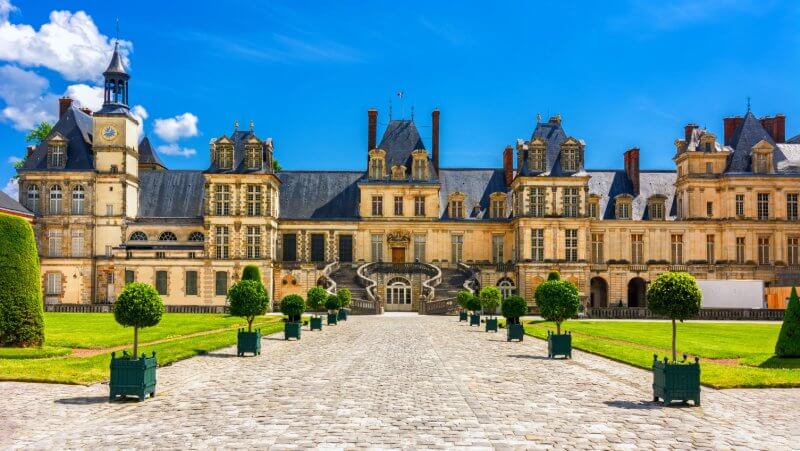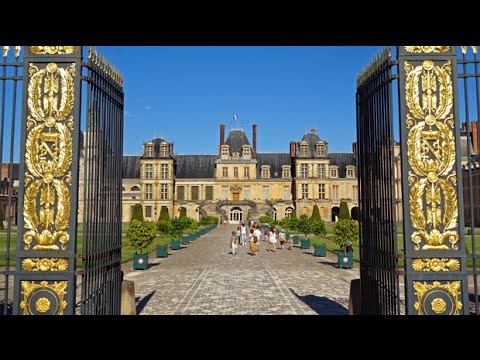70 km from the French capital is a small but fairly well-known town of Fontainebleau. It is known mainly for the colorful castle of the same name and the beautiful forest. The Fontainebleau Palace has been a major center of the country’s political life for many centuries, and now it and the adjacent park are an interesting tourist attraction and a significant attraction in France.
Fontainebleau Castle in France: a little history
In the XII century, a small hunting lodge appeared in the forest near the Blo spring. After some time, the king’s hunting castle was already standing on this place. The castle was first mentioned in historical records for 1137.
This is interesting! The area of Fontainebleau gets its name from the source of Blot: “fontaine” in French means “spring”.
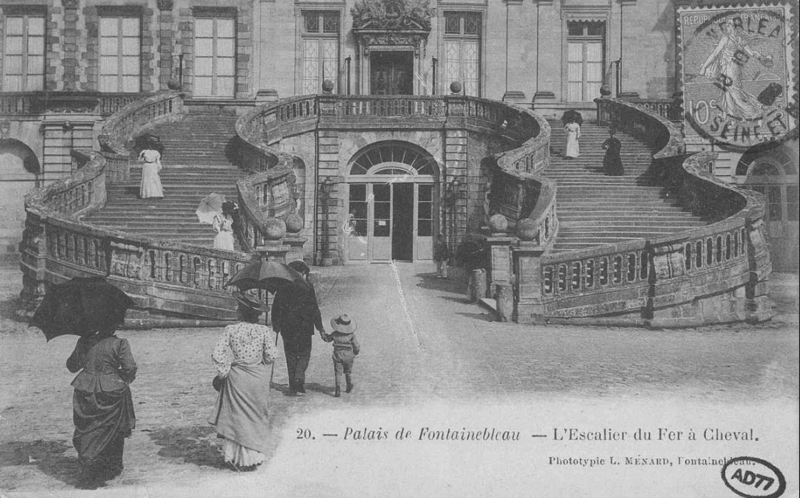
The history of Fontainebleau continued in the XVI century, when Francis I built a new castle on the site of the old medieval building. Of all the old buildings, only the donjon has been preserved, but a new royal palace has appeared, which to this day remains the main architectural structure of the Fontainebleau complex. The famous Italian masters Primaticcio and Cellini were engaged in the construction and decoration of the new castle.
Interesting fact! Fontainebleau Castle in France became the first residence of kings in Europe, which is completely devoid of defensive functions.
After the death of Francis I, the palace was inherited by Henry II of Valois, who entrusted the further construction of the complex to the famous architect Philibert Delorme. But when Henry II died, the castle was abandoned and gradually lost its splendor.
Already in the 17th century, under Henry IV, large-scale construction work began again: the castle was expanded and improved, the surrounding area was improved. At this time, a ballroom and a large Diana gallery were created, instead of frescoes, the walls were covered with oil paintings, wood panels were decorated with paintings, and a 1200-meter pond was equipped.
When Henry IV died, the palace was abandoned and deserted for many years. Neither Louis XIII nor Louis XIV needed a residence.
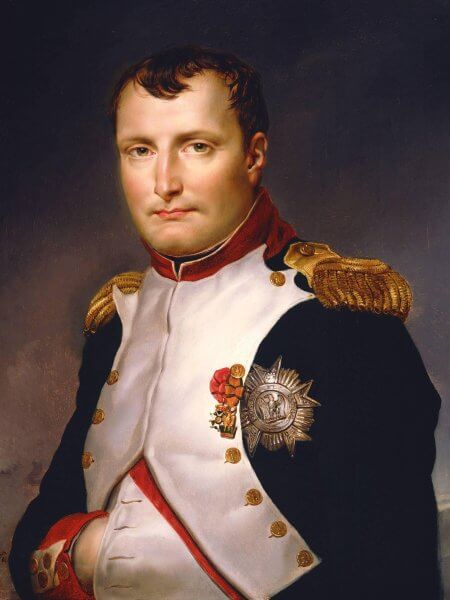
Another revival of Fontainebleau took place under Napoleon Bonaparte, who spoke of this castle as a favorite “house of the ages”. The emperor returned the complex to its former chic, spending a huge amount of money on it: individual buildings of the castle were rebuilt, old or new apartments were re-equipped, squares were landscaped.
Fontainebleau Castle was built for centuries, which explains the “cultural layers” present in its architectural appearance. Now this unique palace, which brought fame to a small town in France, resembles a large box filled with various valuables.
In 1981, the Fontainebleau Park and Palace in France were added to the list of UNESCO sites.
The most interesting objects of the royal residence
Fontainebleau (France) is a large-scale palace and park complex on an area of 130 hectares. It includes numerous buildings with luxury apartments and galleries, a theater for 400 people, chapels and museums, a unique park area in the heart of the forest.
Not all of the rooms of Fontainebleau Castle are open for inspection. But it will take many hours to see even this part.
Halls and salons
The throne room was originally the bedroom of the kings of France. Where the bed was, Napoleon Bonaparte placed his throne, brought from the Tuileries. During the reign of Louis XV, sculptural medallions made of wood and carved wooden decorations appeared near the fireplace above the doors, and the ceiling was painted white and decorated with mosaics with gilding. Napoleon placed standards with his initials and the royal eagle in the hall.

Next to the Throne Room is the Council Chamber. Initially, this room was the study of Francis I, and under Louis XIV it was expanded. Napoleon used this room as a meeting room for the council. All the furniture in zade has been preserved from those times: monochrome paintings in blue and pink on the walls, chairs at the table by Marcion, folding chairs by Jacob Desmalter.
The ballroom, built under Henry II, is considered one of the wonders of Fontainebleau Castle. The huge hall (300 m2) has a vaulted ceiling supported on massive pillars that form a system of arcades-embrasures. Niches-windows located in these embrasures overlook the picturesque garden and Oval courtyard.
In the Red Salon of the castle, also known as the Hall of Abnegation, there is a small round table where Bonaparte signed his abdication. The interior walls are covered with red silk wallpaper, a large gold-framed mirror hangs over the fireplace, and a carpet with 5 stars is laid on the floor.
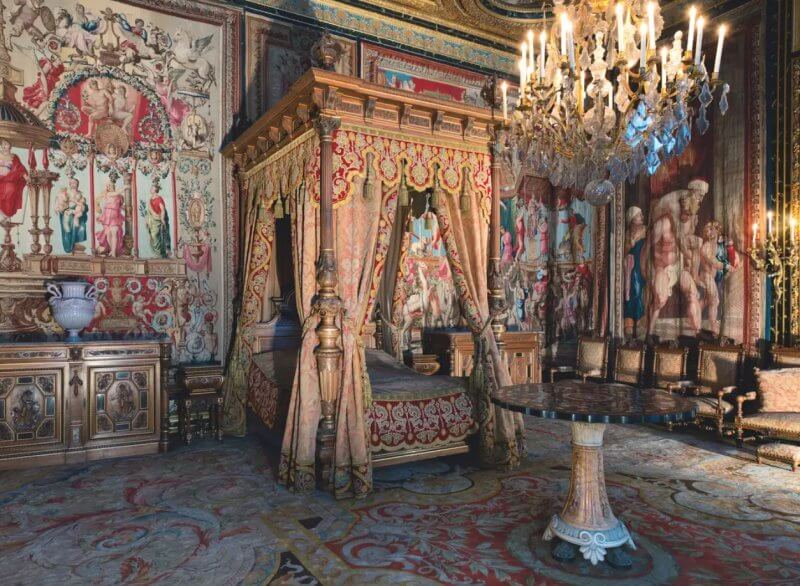
In the Grand Salon of the palace there are tapestries illustrating the exploits of Alexander the Great. In the interior of the Donjon there is a marble bas-relief depicting Henry IV sitting on a horse.
Galleries
The Francis I Gallery is considered one of the most significant memorials of the French Renaissance. It was she who contributed to the emergence of such a phenomenon in art as the “Fontainebleau school” and was used as a model for the construction of many similar structures in France, in particular, the Louvre and Versailles galleries. This gallery is nothing more than a narrow (6 m) and long (64 m) through corridor. At the top, the walls are completely covered with frescoes (there are 14 of them in total) with a mythological and allegorical plot. In the center of the large wall is the fresco “Danae”, opposite – “The Nymph of Fontainebleau”. Due to the use of too light colors and three-dimensional detailed framing of plaster, the figures in the frescoes look disembodied. This technique has never been used before, it is a creative invention of Fiorentino.
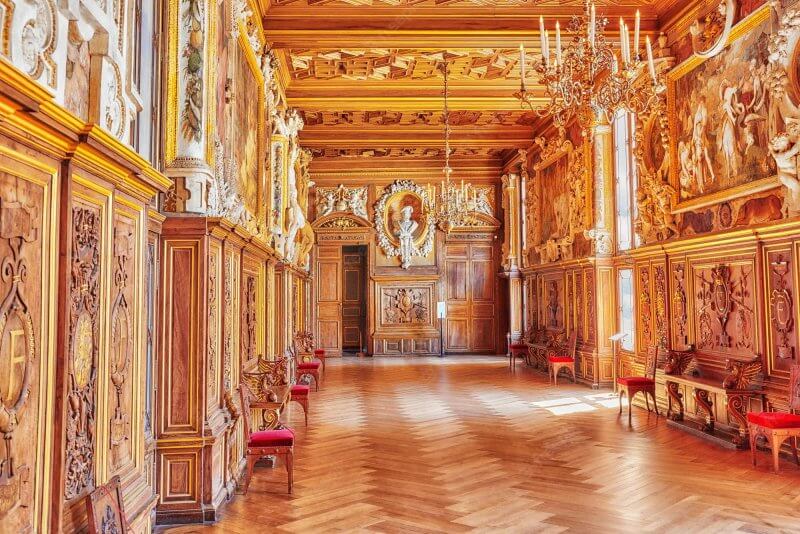
The longest room (80 m with a width of 10 m) in the palace is the Diana Gallery, created under Napoleon. Now there is a museum of paintings with a collection of oil paintings from different rooms of the castle.
The plate gallery is decorated in the Renaissance style. Under Louis Philippe, there were 128 porcelain plates with images of Fontainebleau and other places in France, at least somehow connected with Louis Philippe.
Chapels
On the territory of the residence there are 2 chapels: Holy Trinity and Saint-Saturnin.

The Chapel of the Holy Trinity began to be built under Francis I, finished under Henry II, and the interior was decorated after 1608. The vaults of the ceiling are made of stucco and sculptures, the author of which was Barthelemy Tremblay. The ceiling and walls of the chapel are covered with frescoes based on Biblical themes, created by the artist Martin Freminet. In 1741, the interior was completed with luxurious wrought-iron balconies for musicians and choristers.
Museums
In 1867, by order of Empress Eugenie, several rooms of the palace were redone specifically to display her personal collection of art objects from the Far East. So a Chinese museum appeared in the castle, among the exhibits of which is a Siamese crown, 2 royal palanquins and a Tibetan stupa from the Chinese Summer Palace.

The Napoleon I Museum was founded in 1986. There are:
- portraits of the emperor and his family;
- extensive collection of table china used by the emperor’s family;
- Gold leaf from the crown and Napoleon’s costume from his coronation;
- Napoleon’s travel gear.
Courtyards
In front of the main facade of the castle there is a spacious (152 x 112 m) Courtyard of Honor, which was originally called Bolshoy Nizhny. In the XVI century, it was called the White Horse Yard, as it was decorated with a plaster sculpture of an animal. It is also known as the court of Farewell, because it was there that Napoleon Bonaparte’s farewell to the guards took place when the emperor was going into exile on the island of Elba. From the castle to the courtyard is a wide staircase with very gentle steps (especially for riders) and marches, united at the top by a common platform, and rounded to the bottom in the shape of a horseshoe. An alley leads to the main entrance, on both sides of which there are 2 huge square lawns.
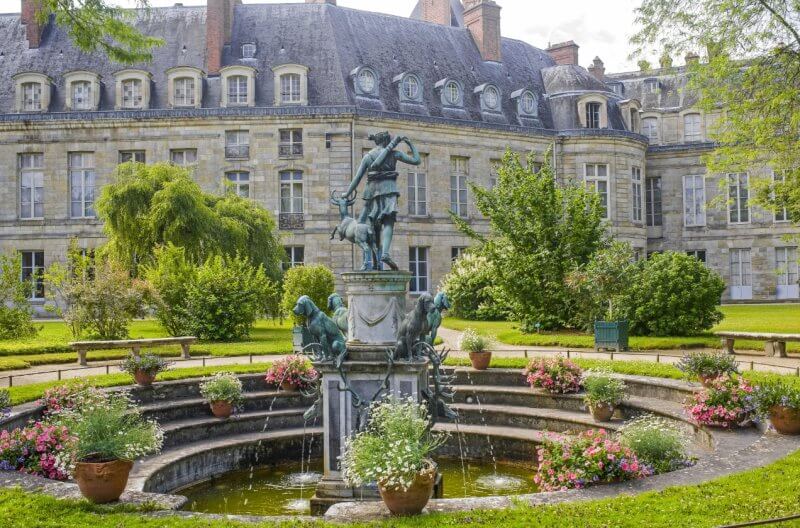
Fountain Yard is so named because of the fountain with a statue of Willis that adorns it. The courtyard faces the Carp pond, and on the remaining 3 sides it is surrounded by buildings from the time of Francis.
The Oval Courtyard is accessed through the Golden Gate on its southwest side. This fortified entrance, built of red brick and light stone, has the appearance of a slightly elongated pavilion. One of the attractions of the Oval Courtyard is the Franciscan clock with unique sculptures and a statue of the god Vulcan beating every hour with a hammer. This territory of the palace complex is closed to tourists.
The service yard, separated from the castle by a narrow street, appeared under Henry IV. Tourists are not allowed there, but even through the gate you can admire the beautiful buildings of the XVII century.
Gardens
The English Garden, located to the right of the main facade, was created in 1812 by Joseph Gourteau. Such landscape design was very fashionable then: narrow winding paths, unusual plants, an artificial river and large boulders. One path leads to the spring that gave the name of the royal residence, and then the city formed around it.
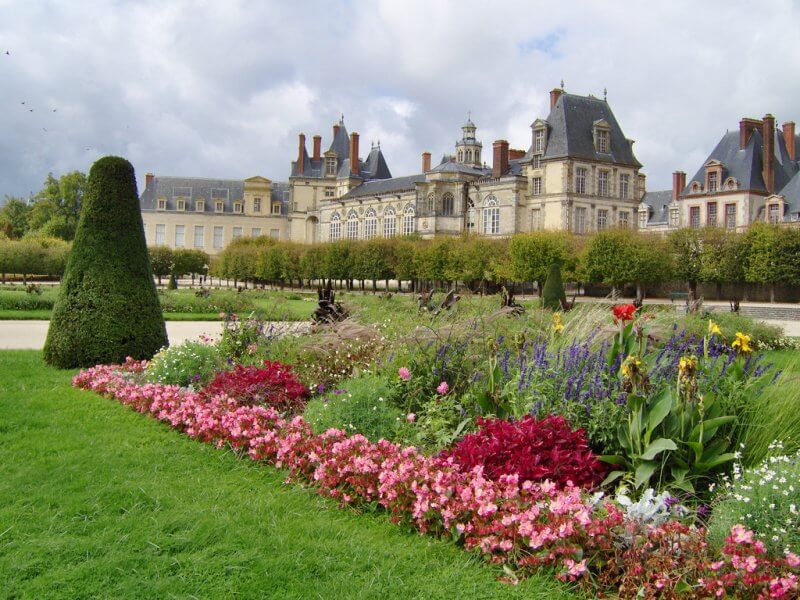
The grand parterre, which covers an area of 14 hectares (the largest not only in France, but also in Europe), was built in 1660-1664 at the request of Louis XIV by the masters Andre Lenotrom and Louis Le Vaux. Very little has been preserved since then: the general arrangement of lawns, water bodies decorated with statues and 4 sandstone sphinxes marking the border between the Large Parterre and the park. In 1817, a square pool known as the “pot of boiling water”was built in the center of the stalls.
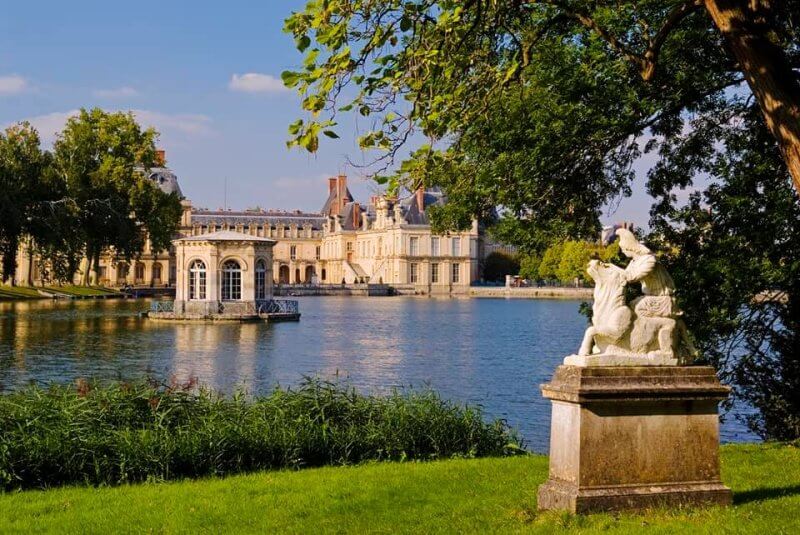
To the left of the main facade is the Diana Garden, so named because of the round multi-level fountain with a statue of Diana the Huntress. Under Napoleon Bonaparte, the garden was decorated in the English style, and under Louis-Philippe it was significantly expanded. After the fall of Napoleon III, it was opened to the general public.
Practical information
You can see Fontainebleau Park completely free of charge, and at any time of the day.
Fontainebleau Castle, along with its courtyards and gardens, can be viewed on all days of the week, except Tuesdays at this time.:
- during the period from the beginning of October to the end of March – from 9: 30 to 17: 00 (last call at 16: 15);
- from the beginning of April to the end of September – from 9: 30 to 18: 00 (last call at 17: 15).
You can go on a guided tour yourself if you have a Grands Appartblockquoteents ticket. You can buy it at the ticket office or on the official website of the palace: https://www.chateaudefontainebleau.fr/en/
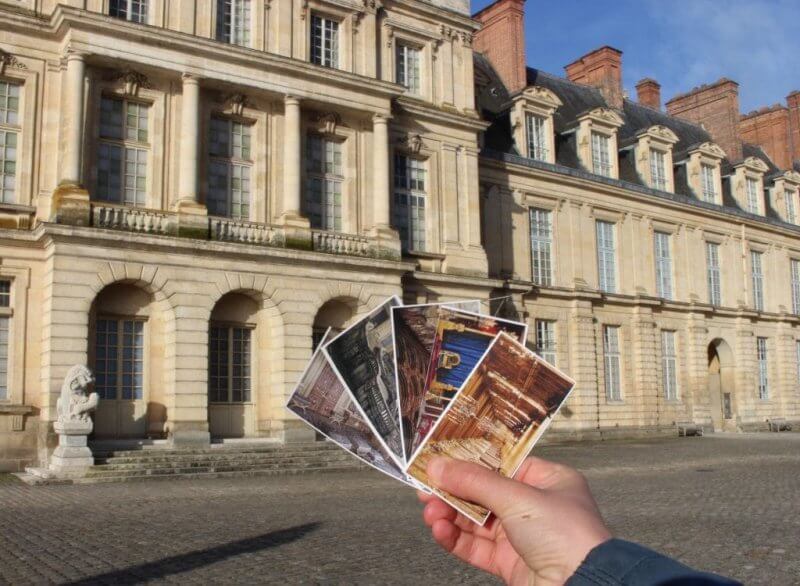
The Grands Appartblockquoteents ticket costs:
- full price — 13 €;
- reduced price — 11 €;
- 1 hour before closing – 8 €.
Additionally, you can take an audio guide.
There are guided tours, with a duration of up to 1 hour, the cost is 5 €, with a duration of 1.5-2 hours-7 €.
Fontainebleau Castle is located at 77300 Fontainebleau, France.
How to get there from Paris
From the French capital, Paris, to Fontainebleau, the most convenient commuter train is the Transilien line R. In Paris, these trains depart from the Gare de Lyon station, and arrive in Fontainebleau at Fontainebleau-Avon. The train takes 40 minutes, and the ticket price depends on the selected fare.
From the train station, the Royal Castle complex can be reached by city bus number 3 or a 30-minute walk.
Attention! In 2023, repairs will be carried out on the Transilien R line. Therefore, trains can stop at Melun or Moret-Loing-et-Orvanne instead of Fontainebleau-Avon, with a free shuttle service to the palace.
The schedule of commuter train departures from Gare de Lyon in Paris is available on the French Railways website: transilien.com.
Fontainebleau Palace can also be reached by car from Paris. The A6 motorway is just over an hour away.
Le Havre, France: A Perfect Blend of History and Modernity

